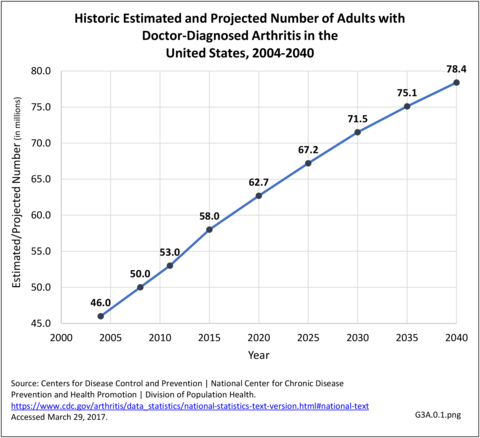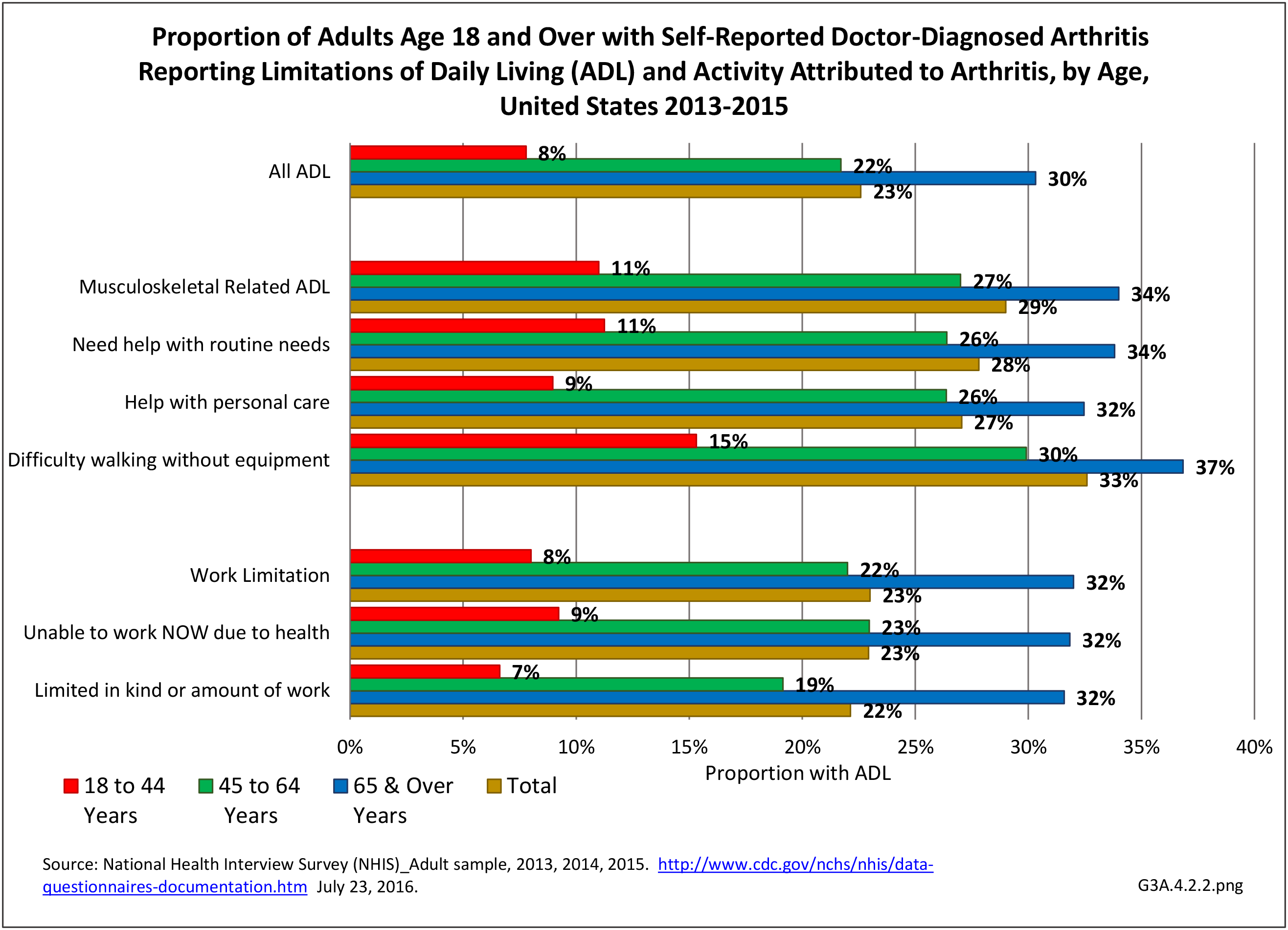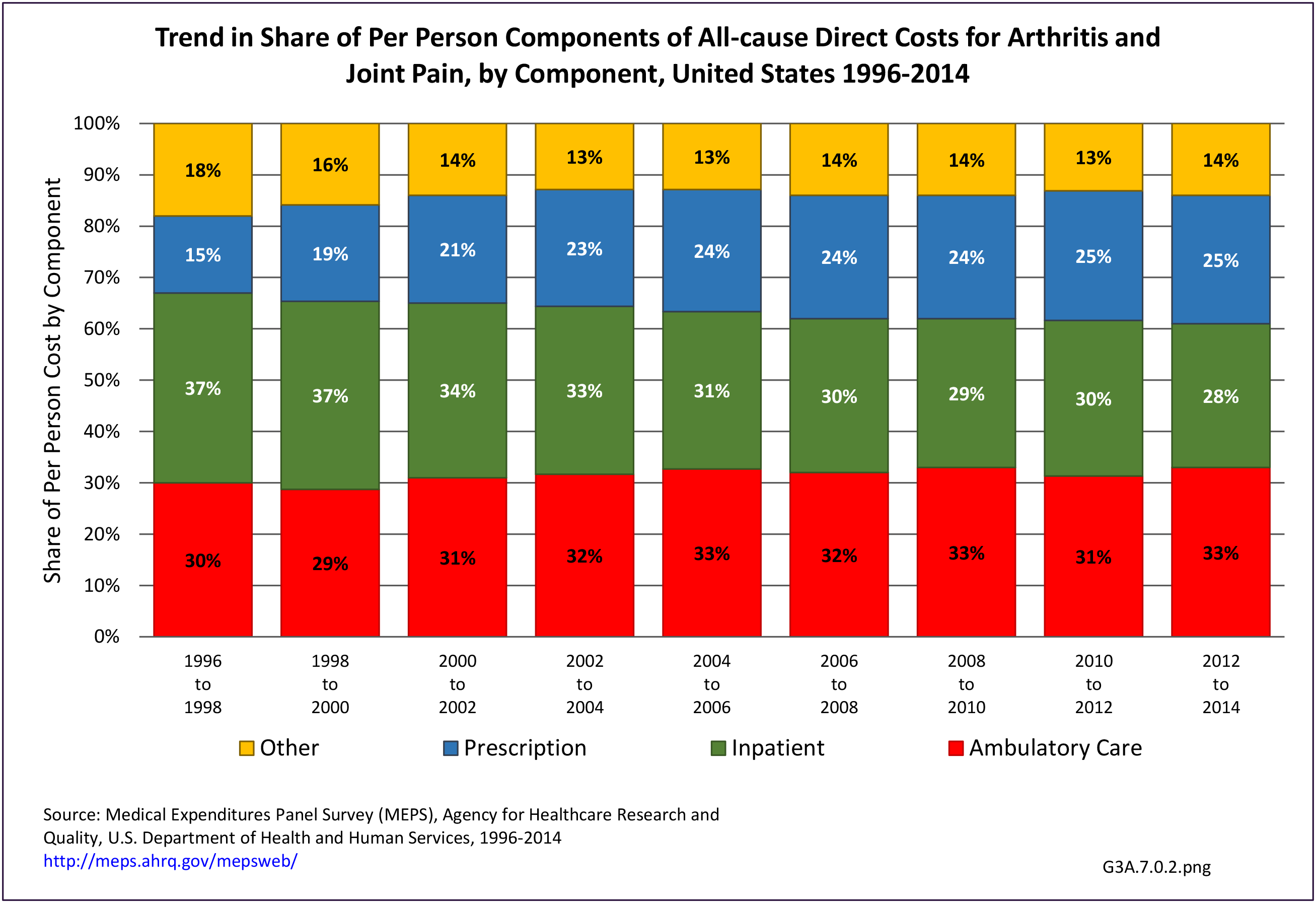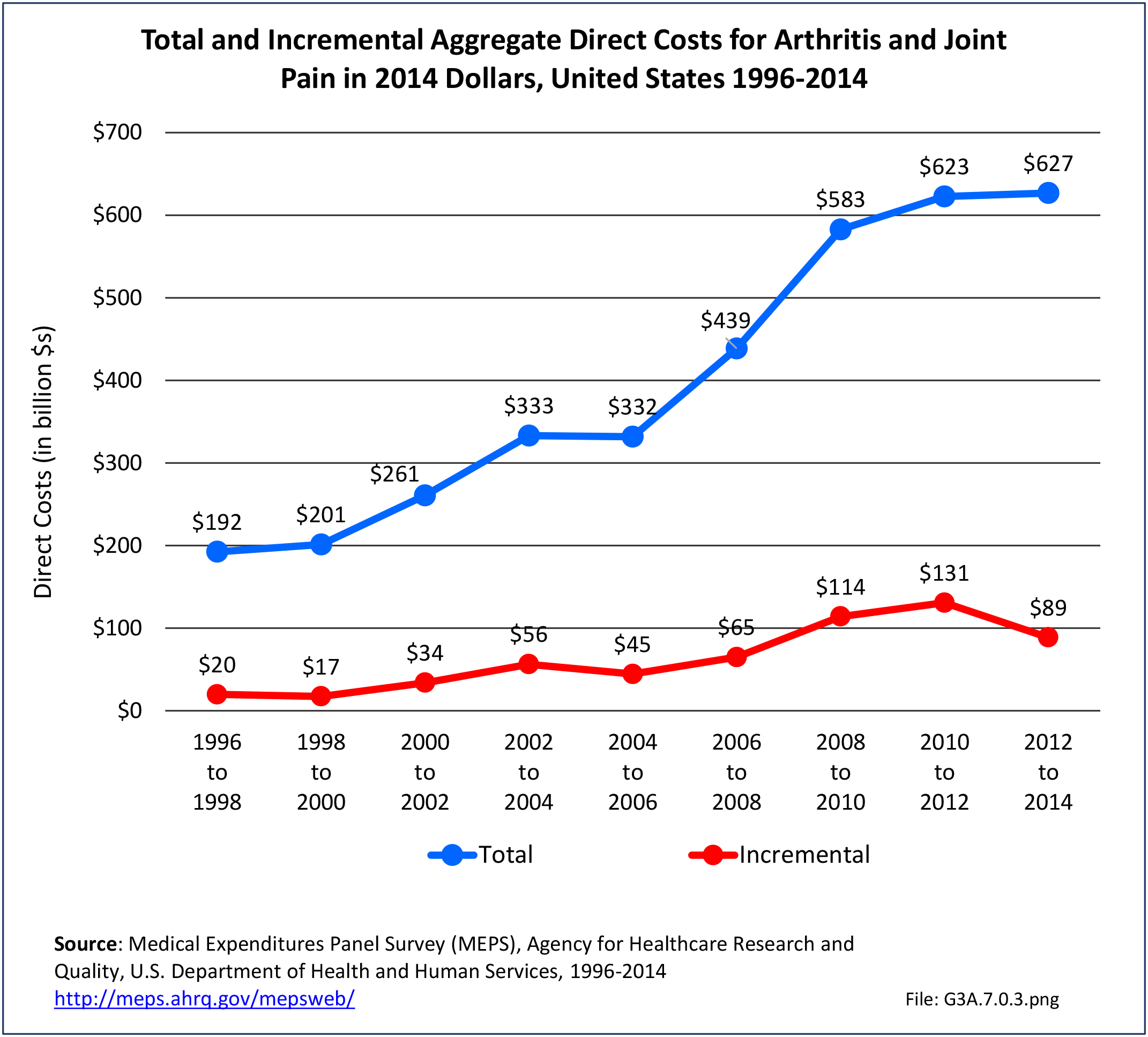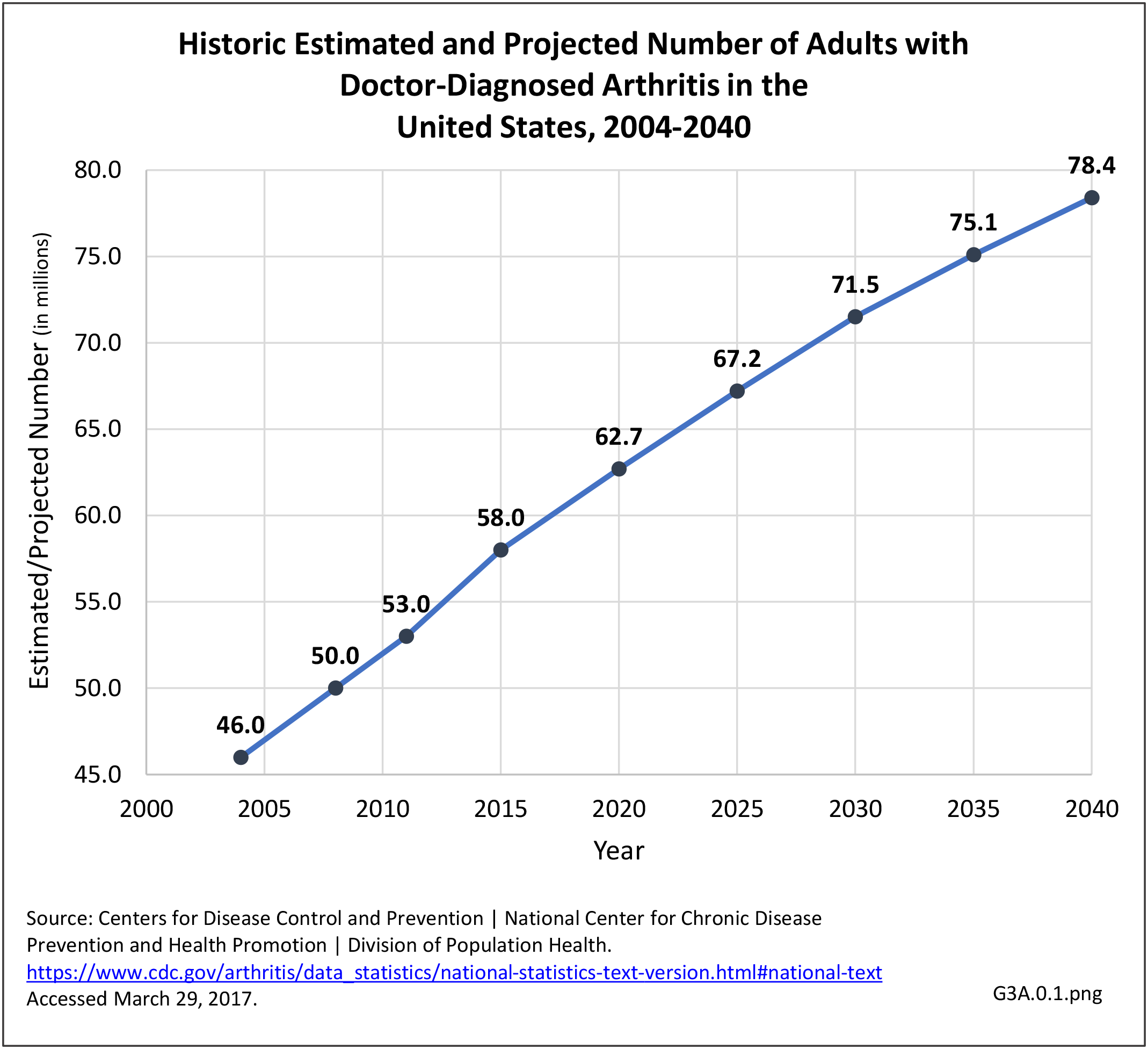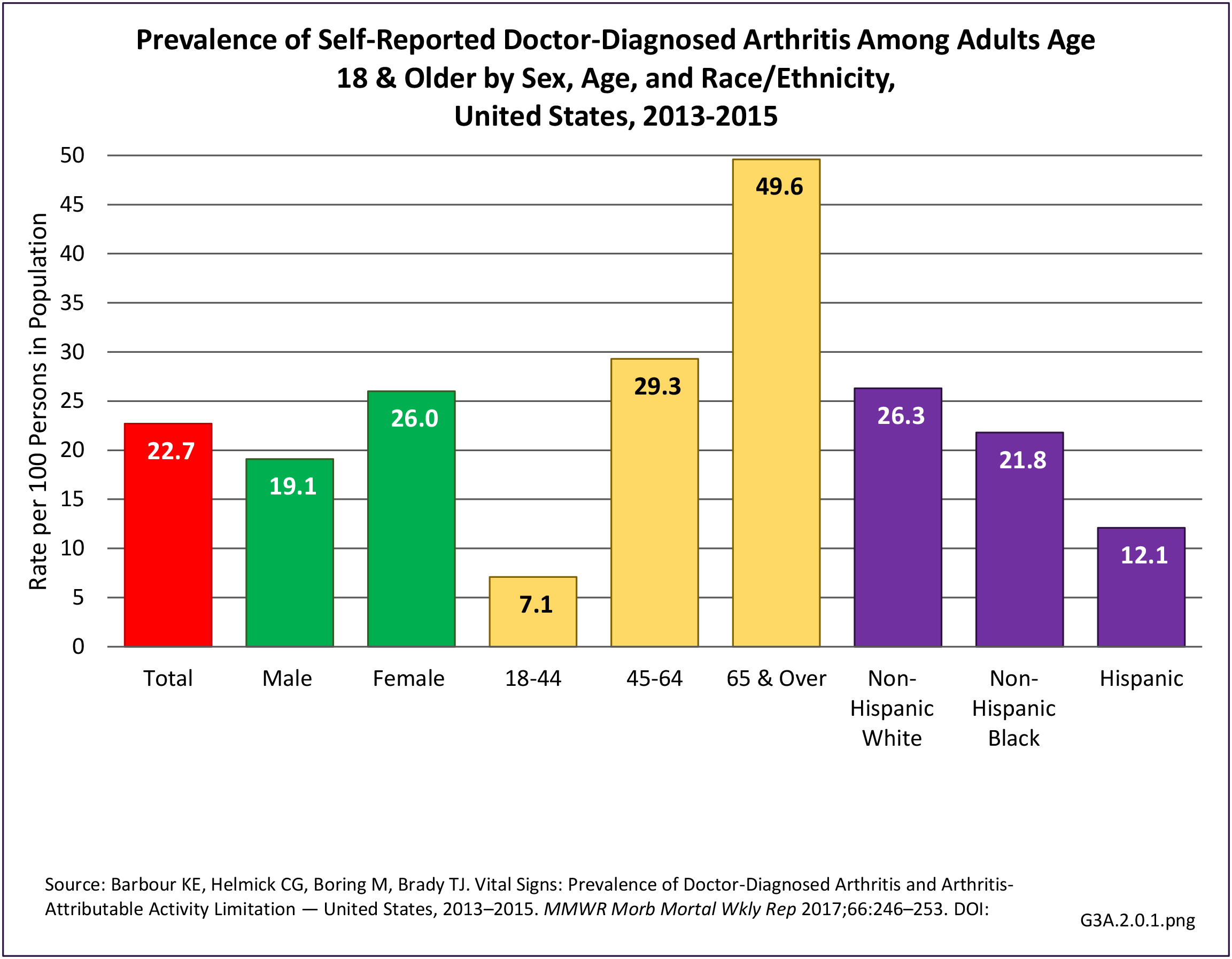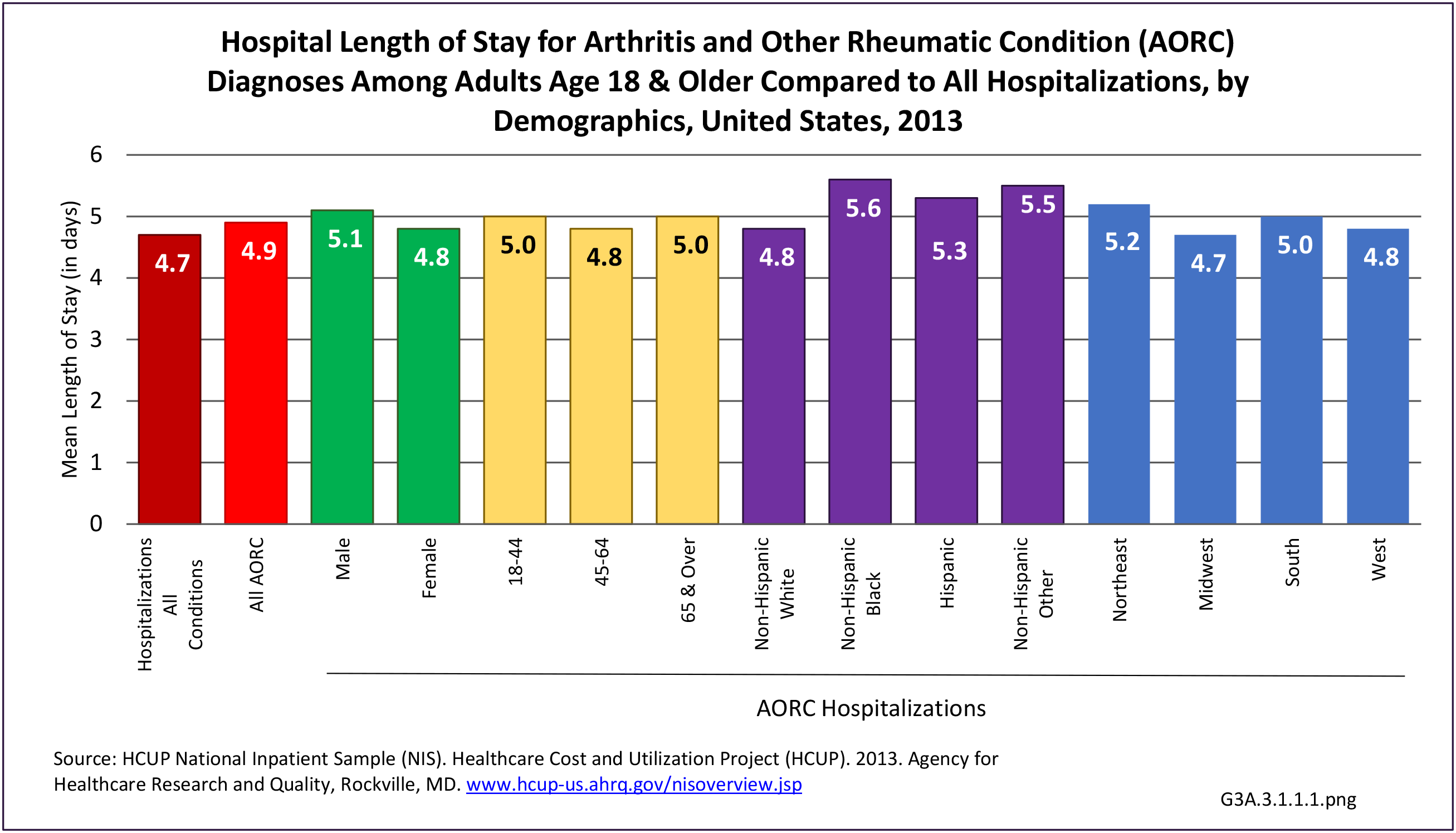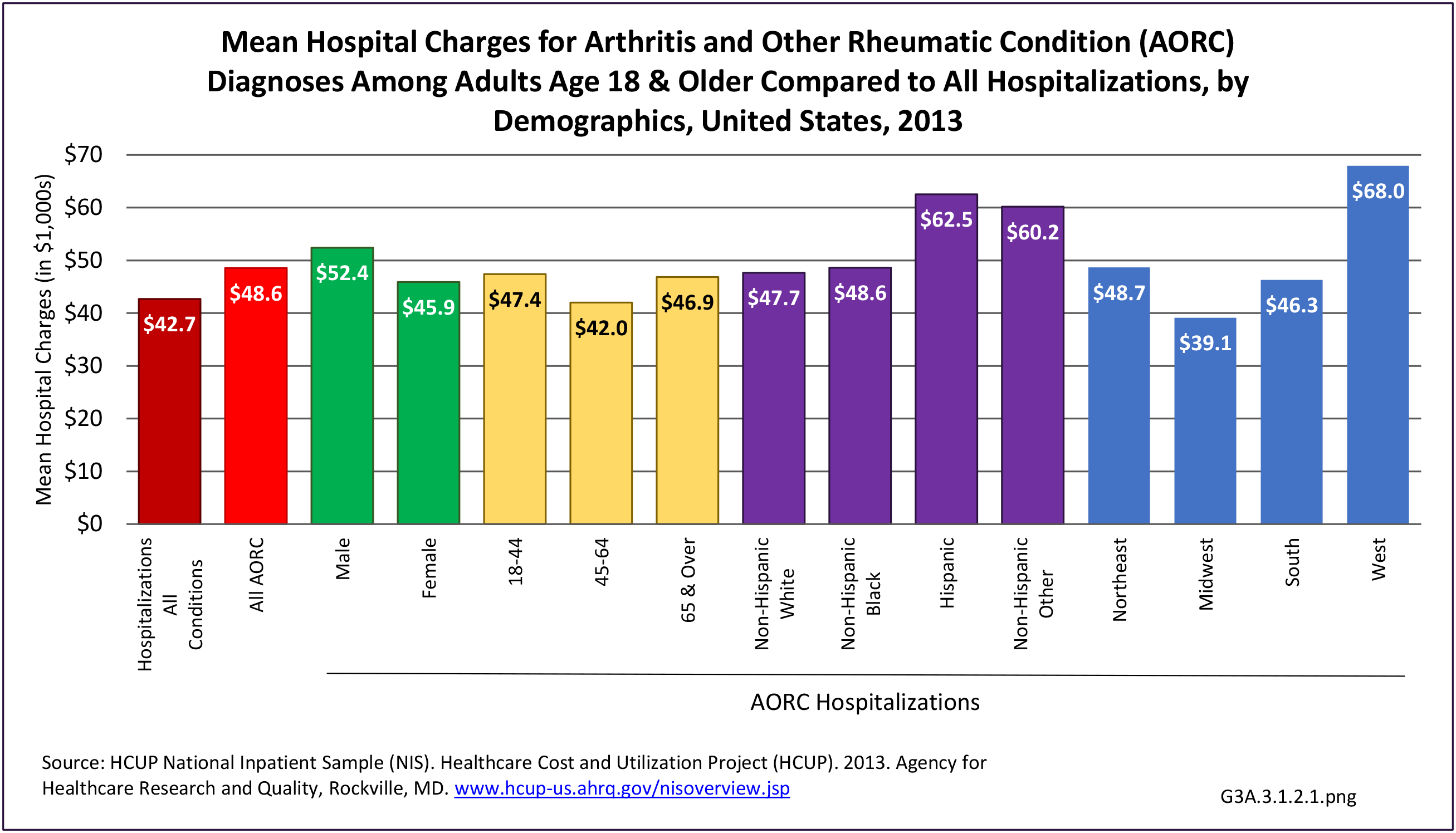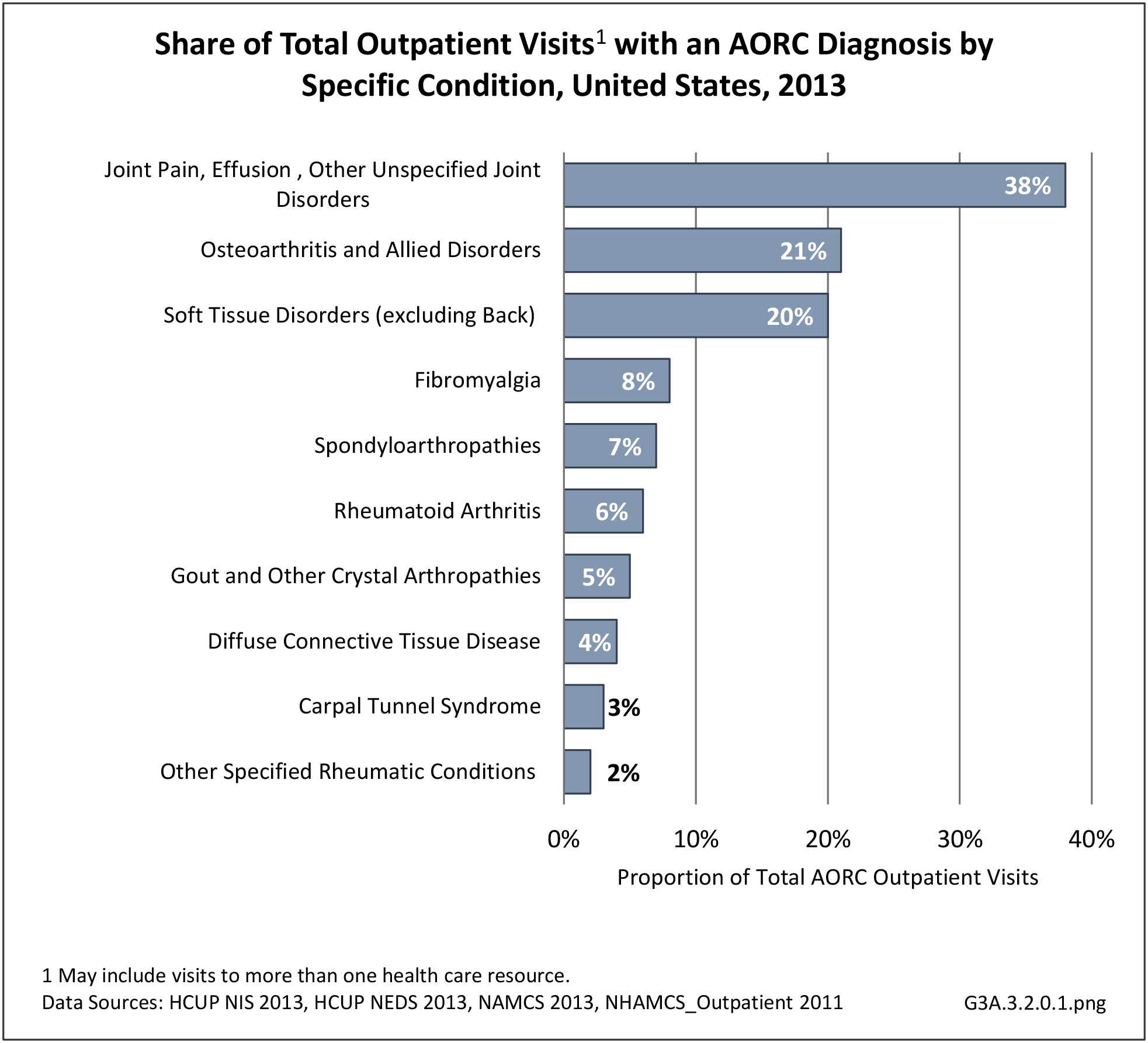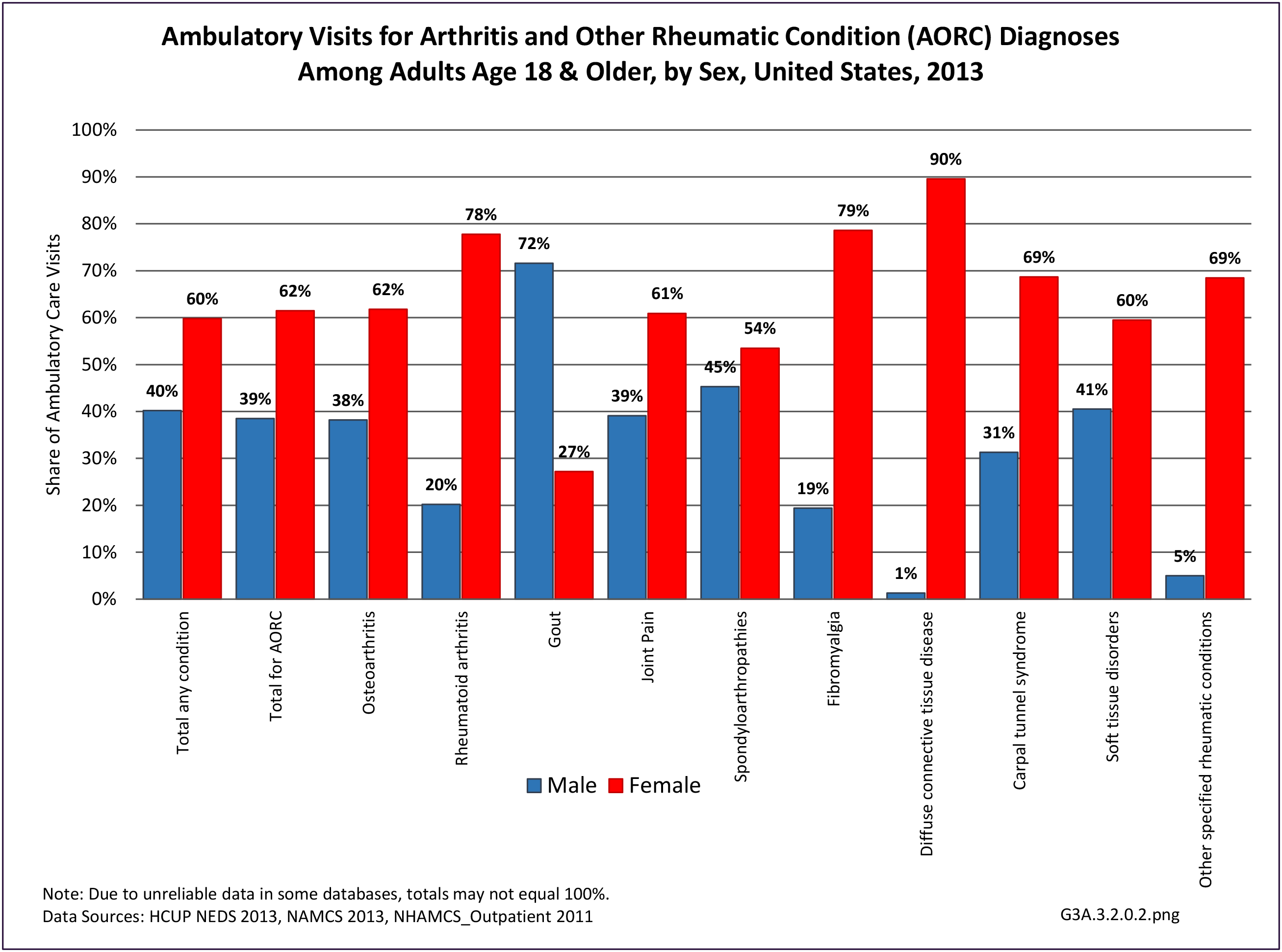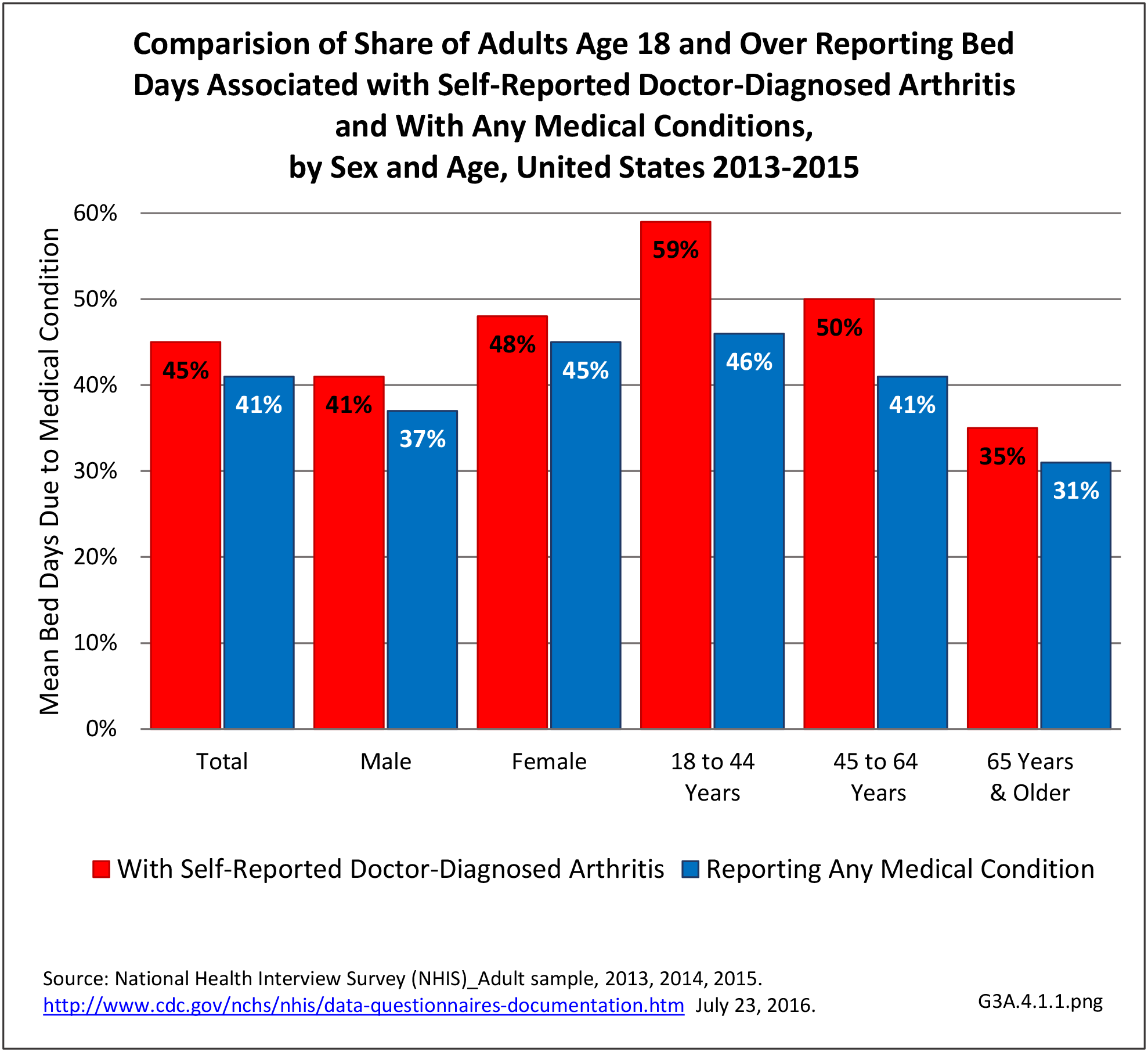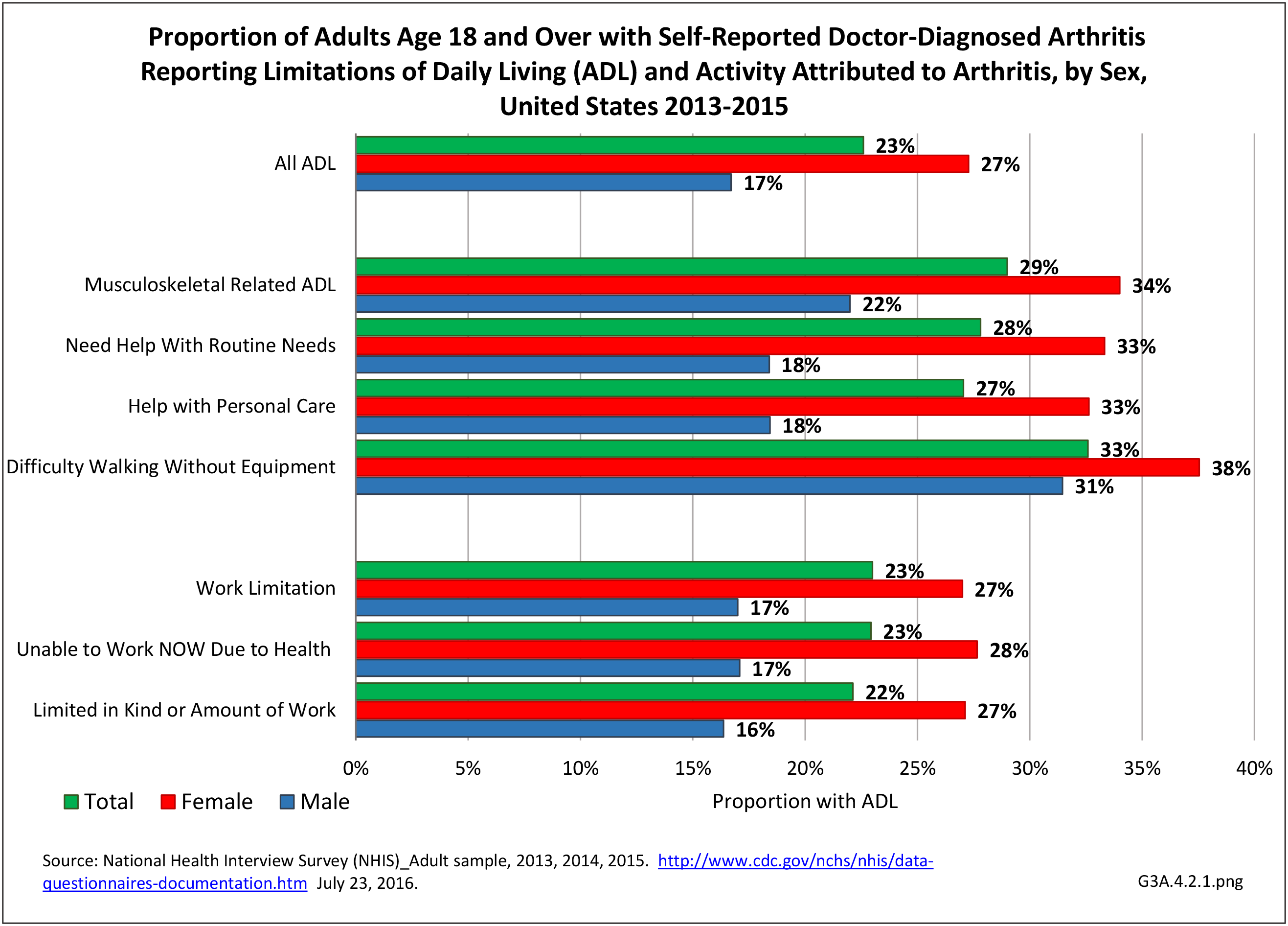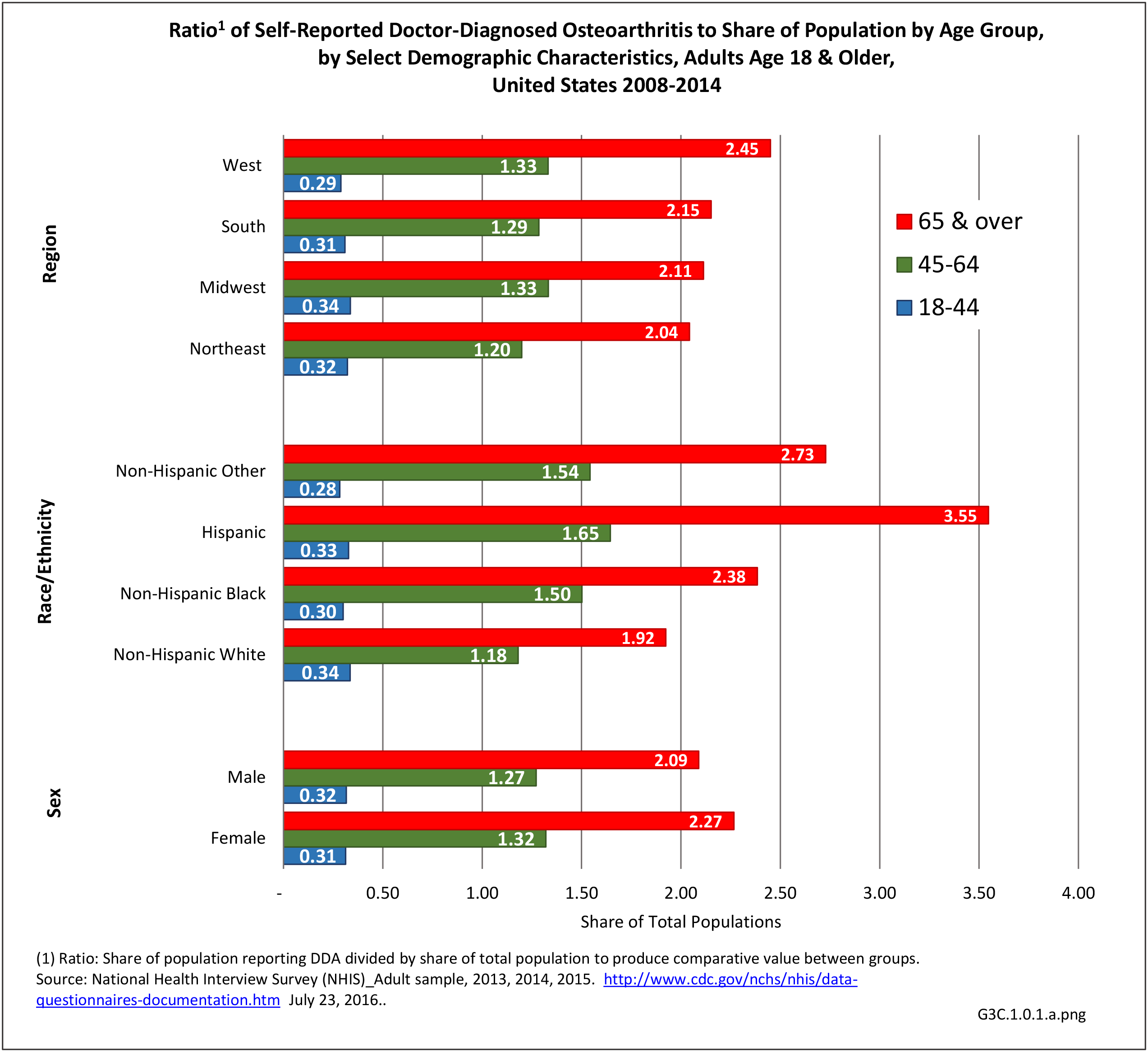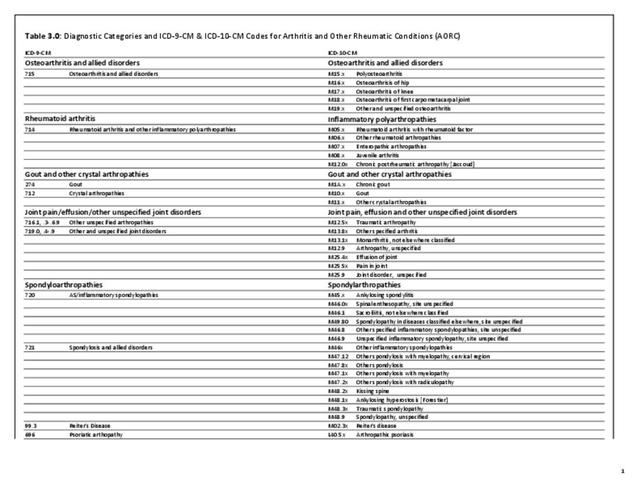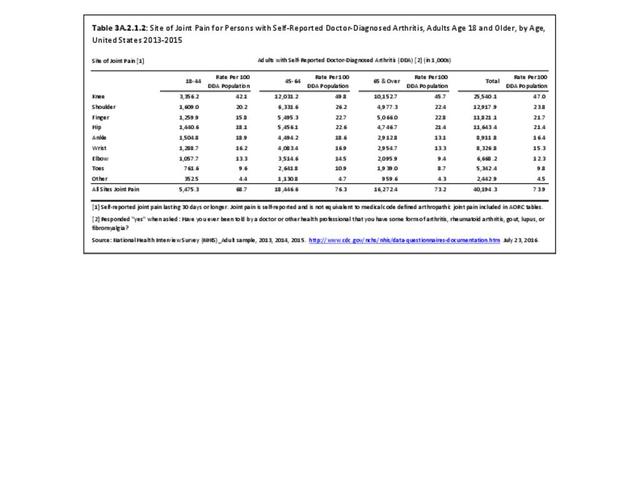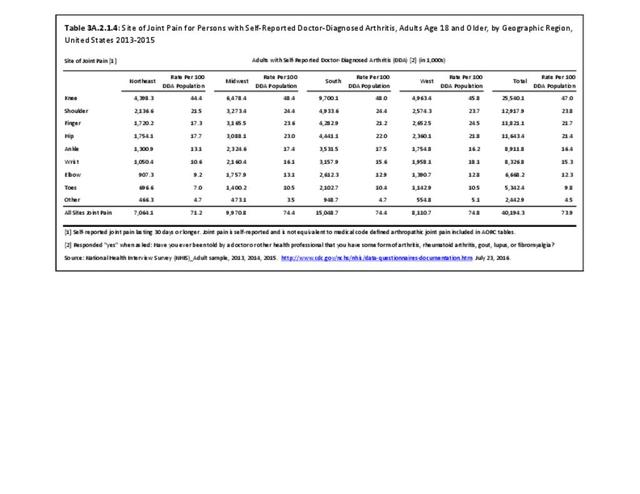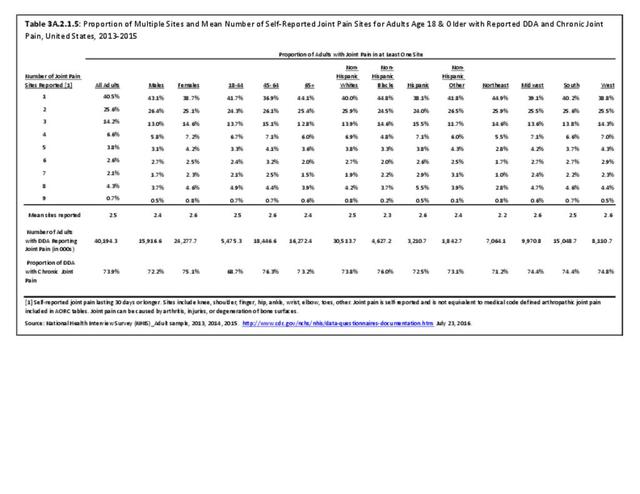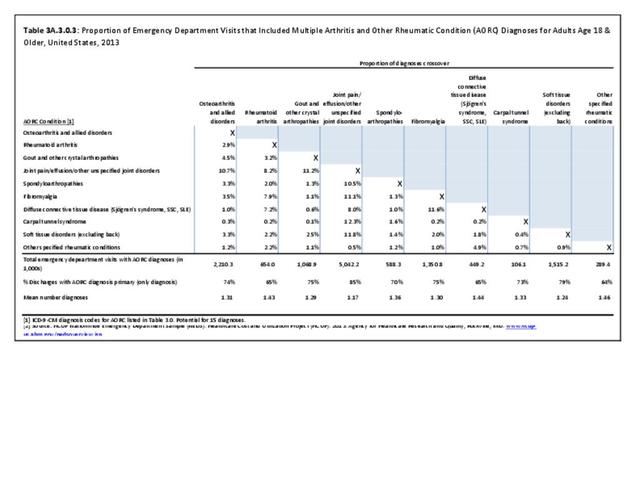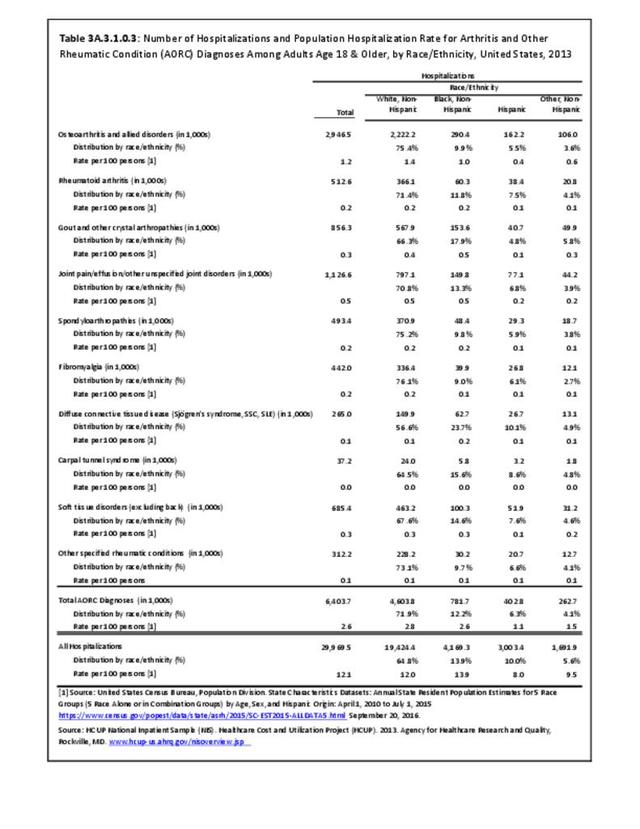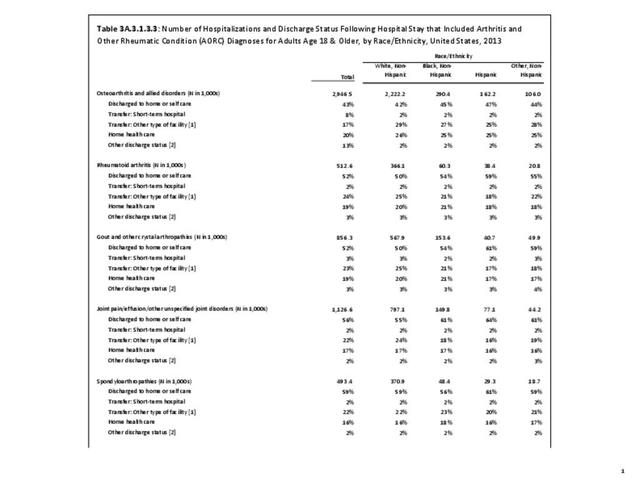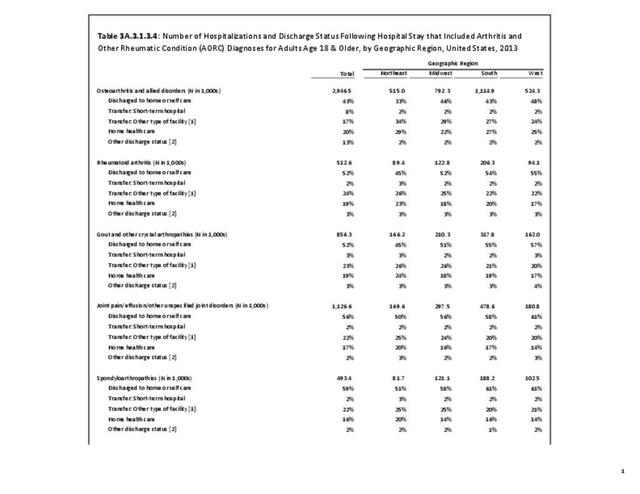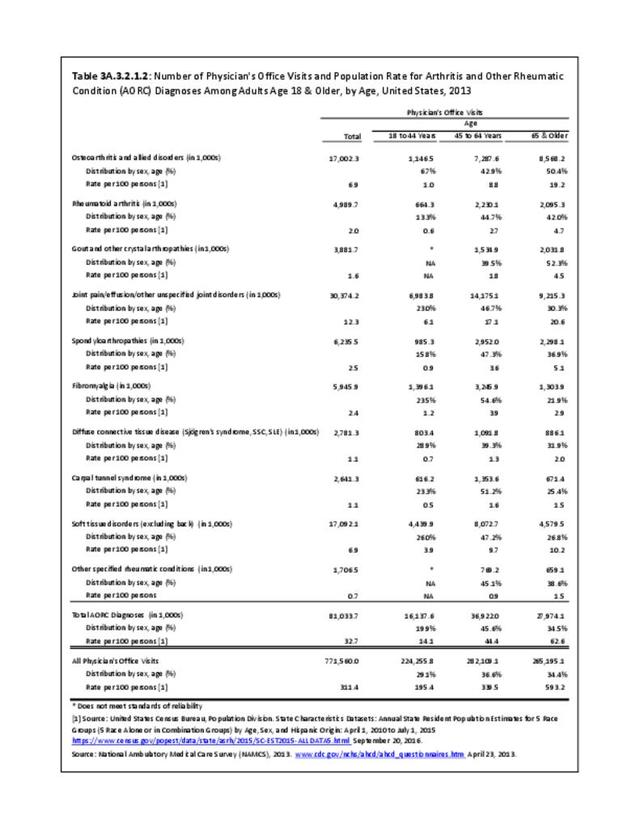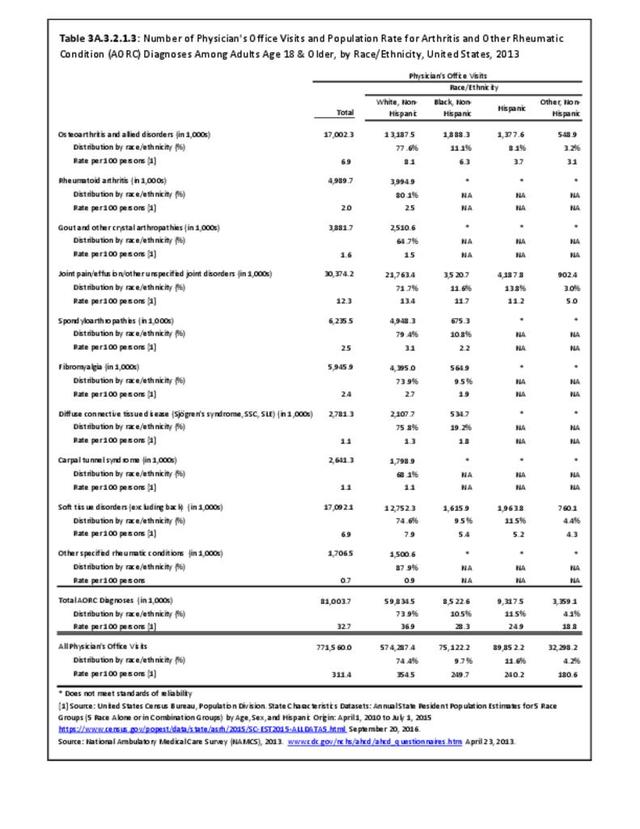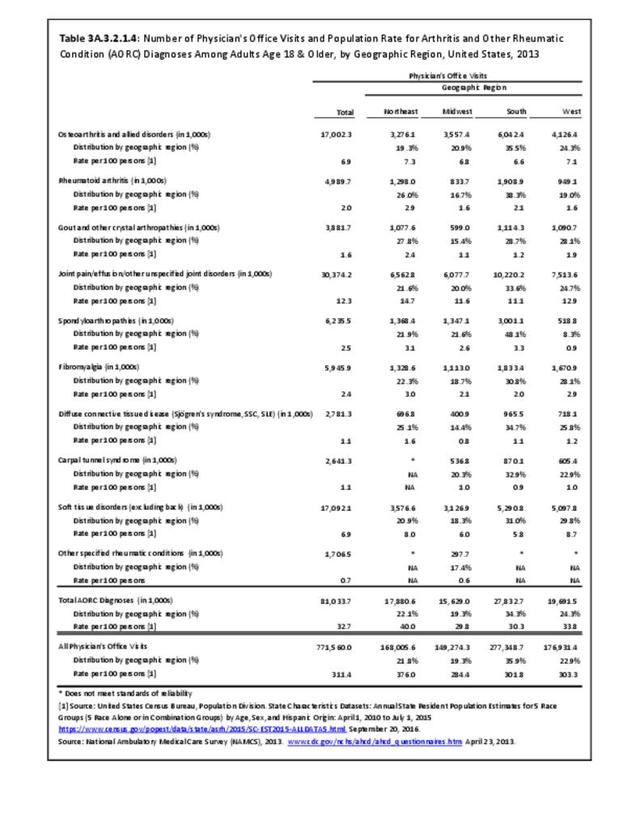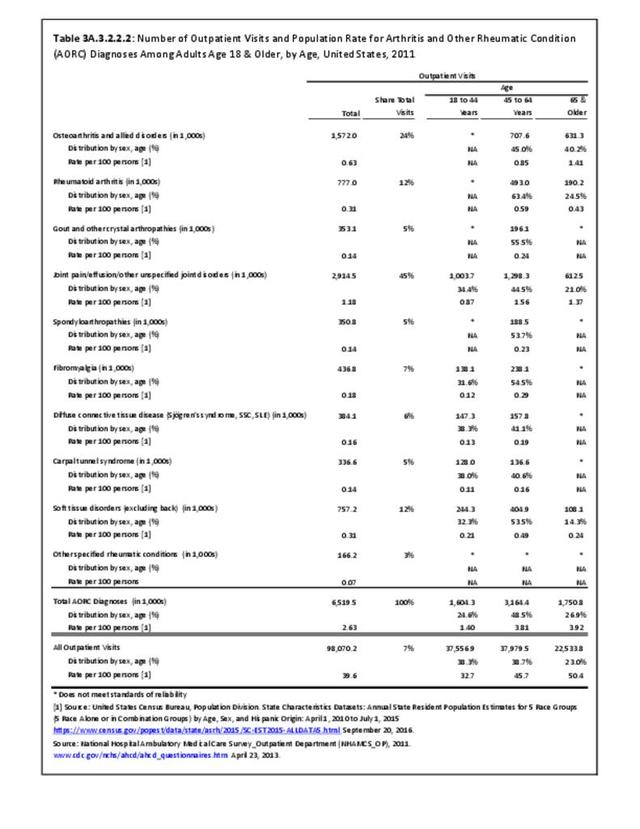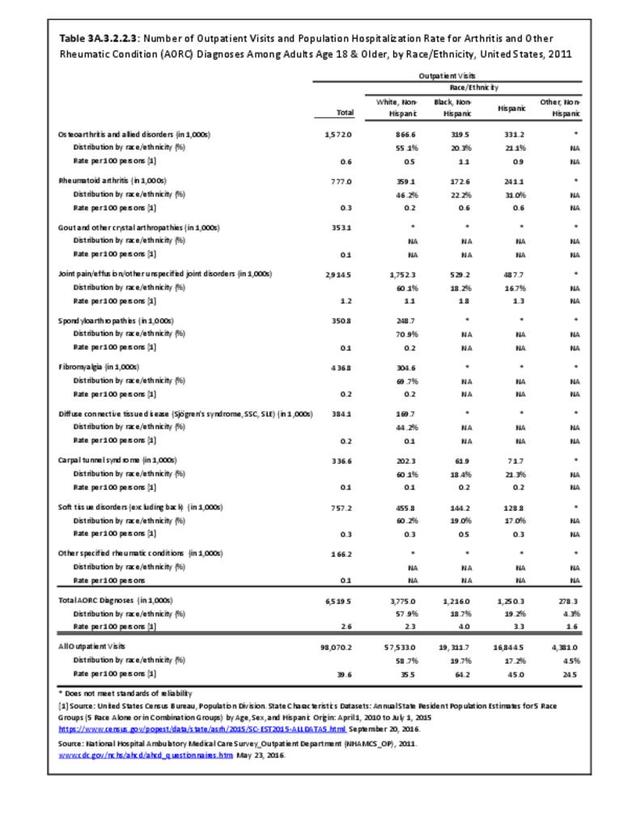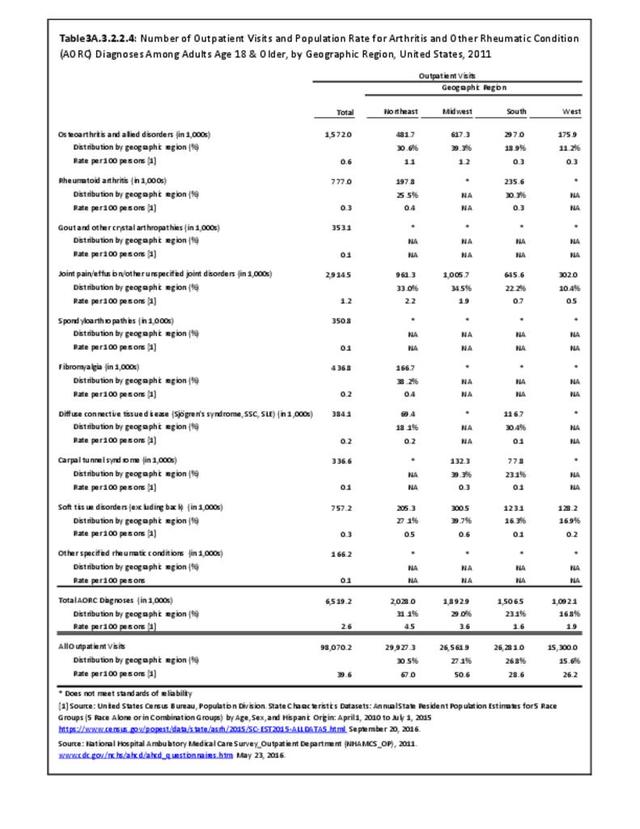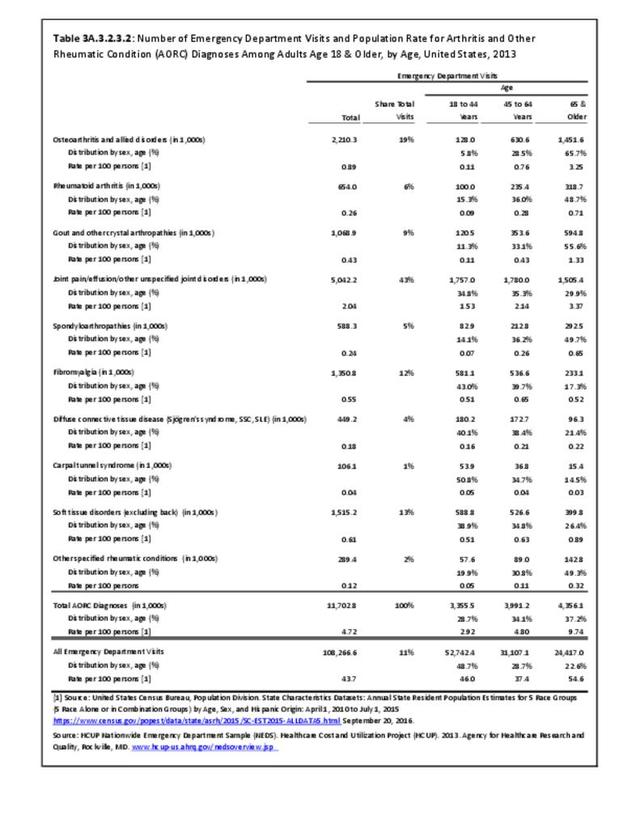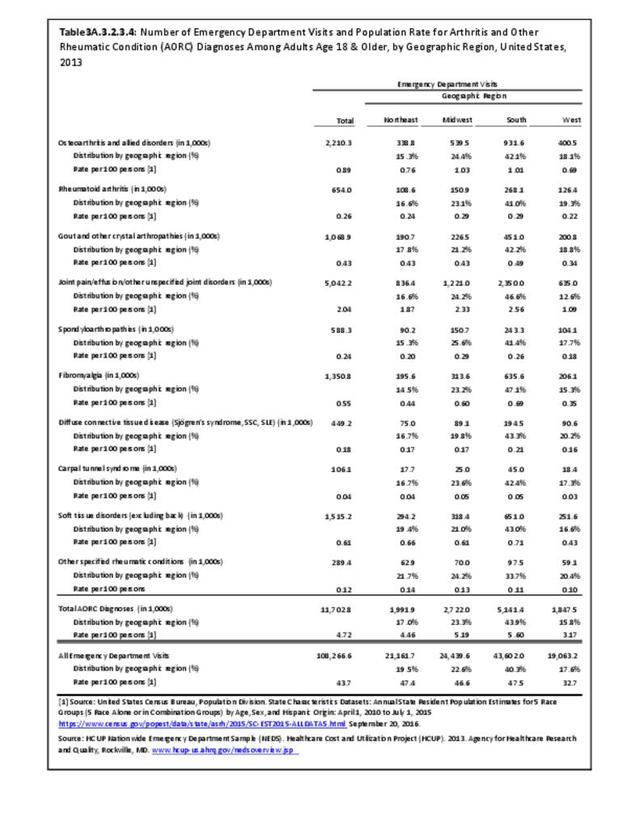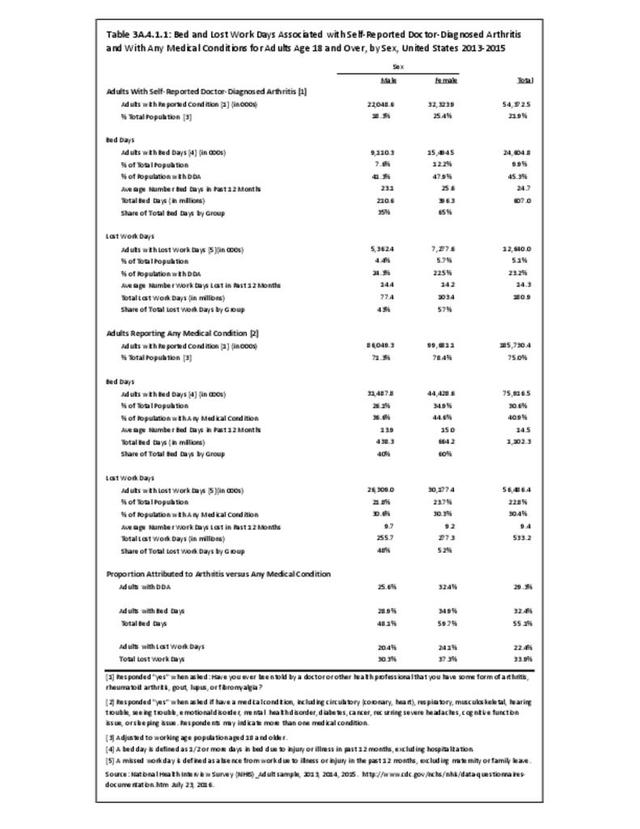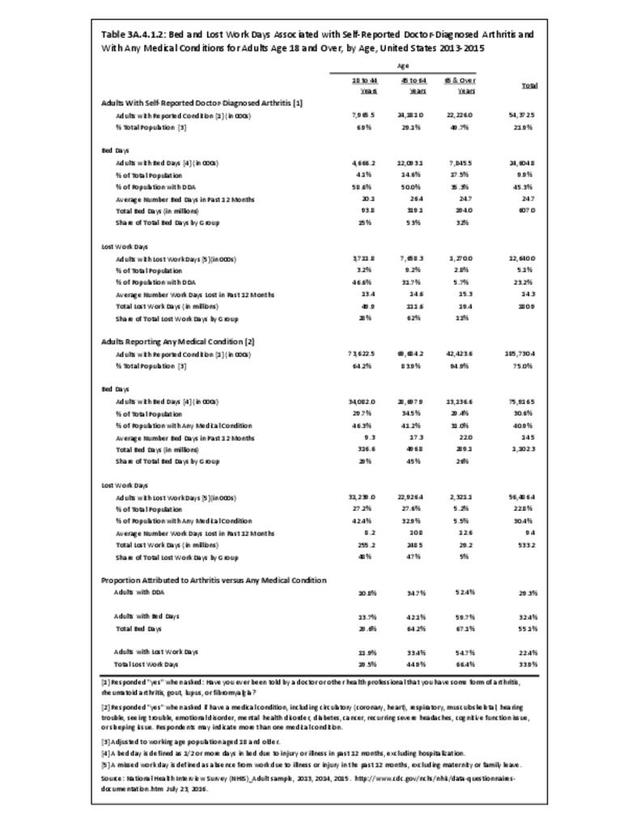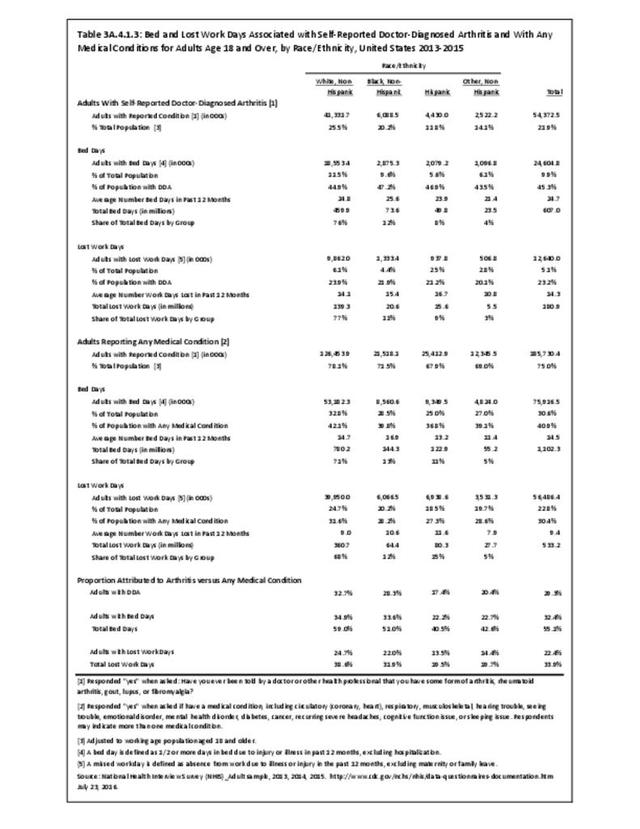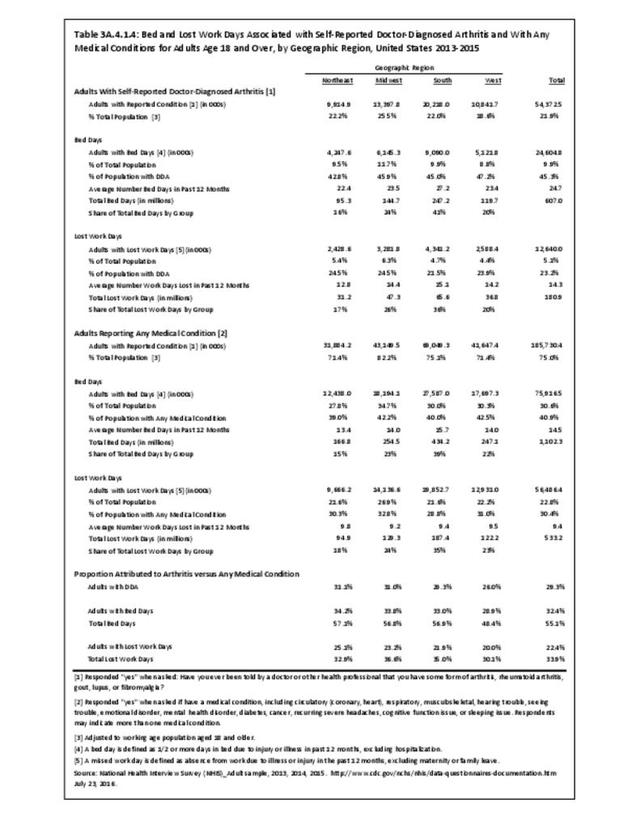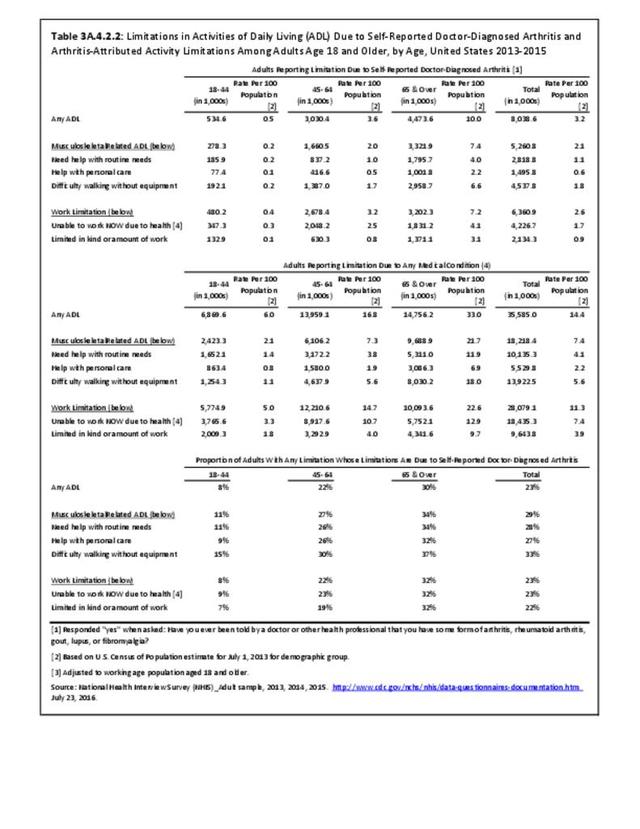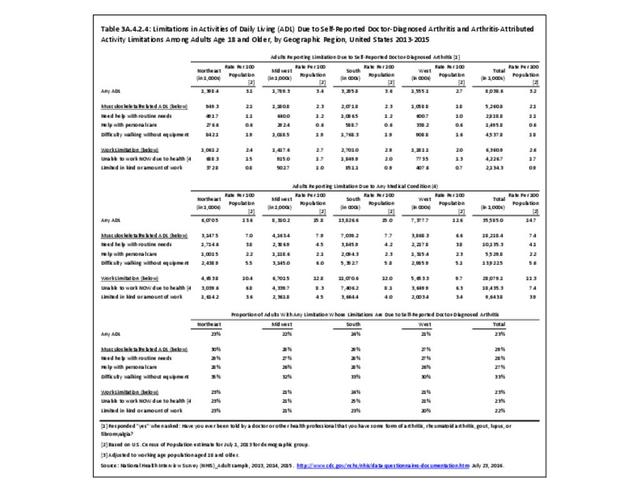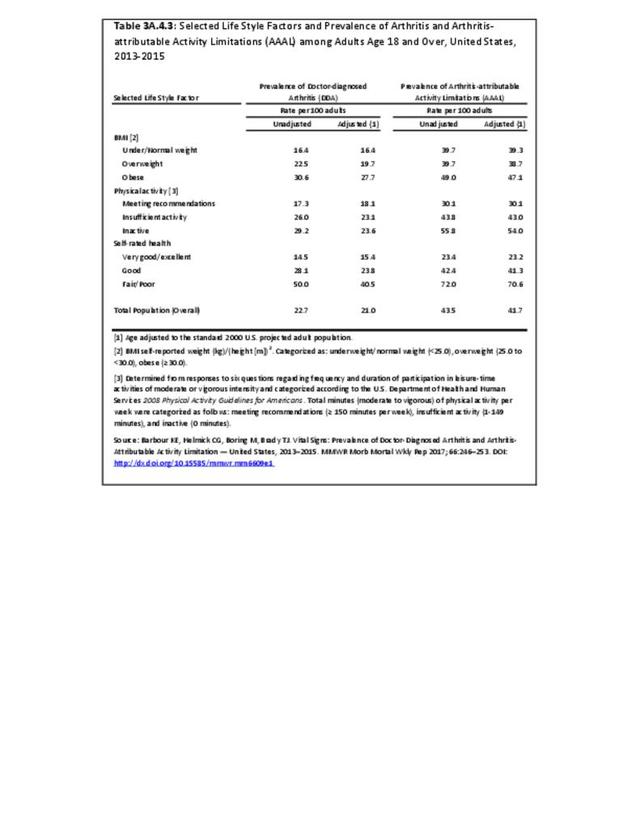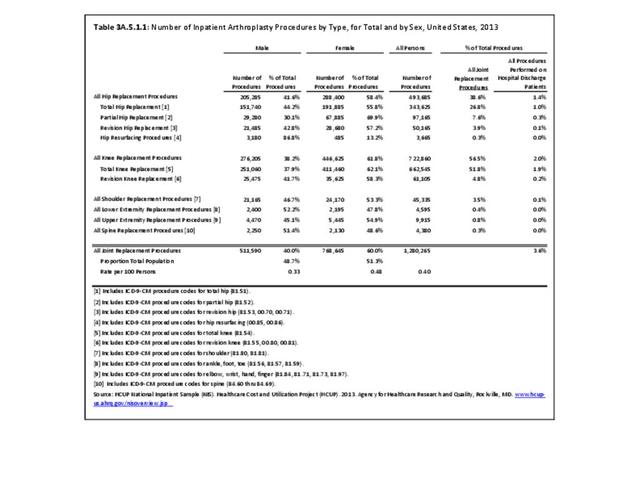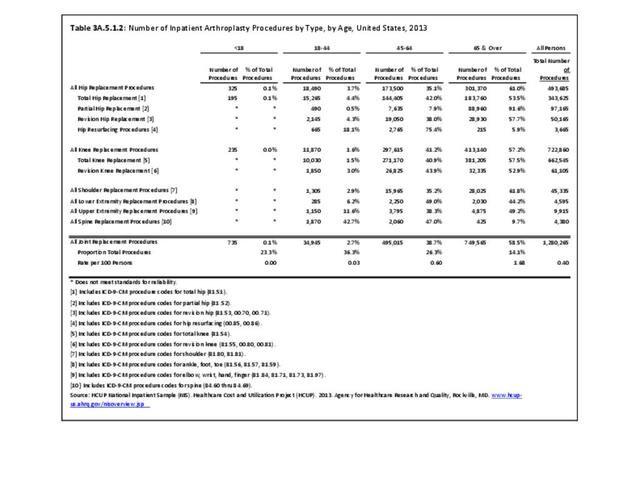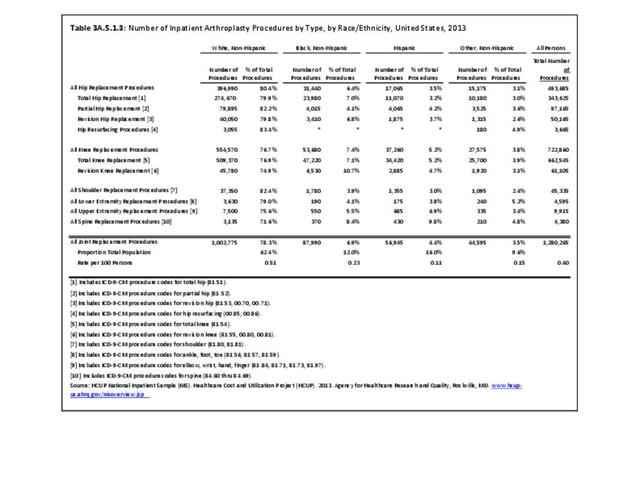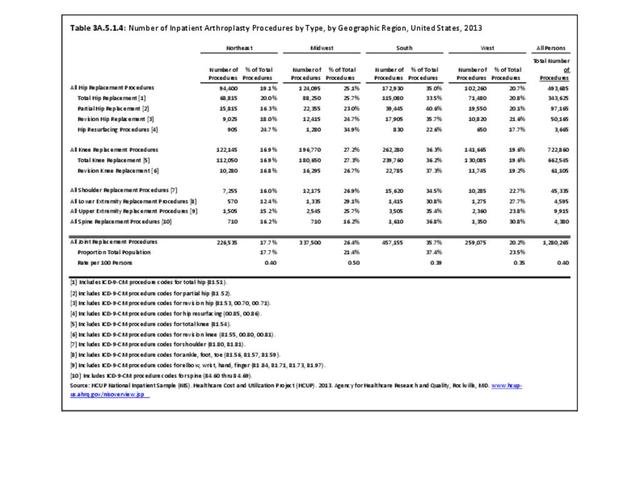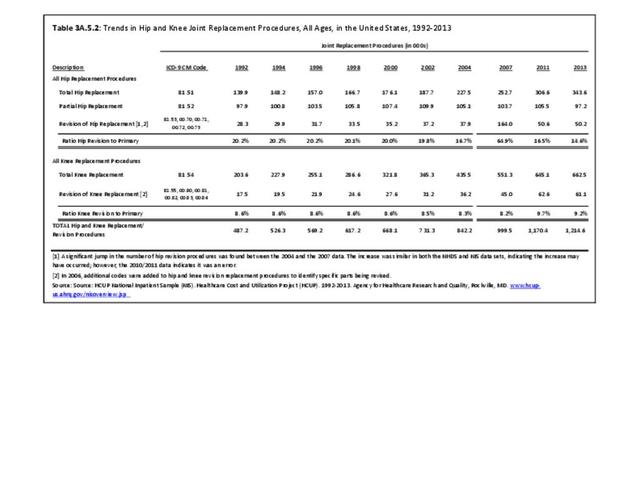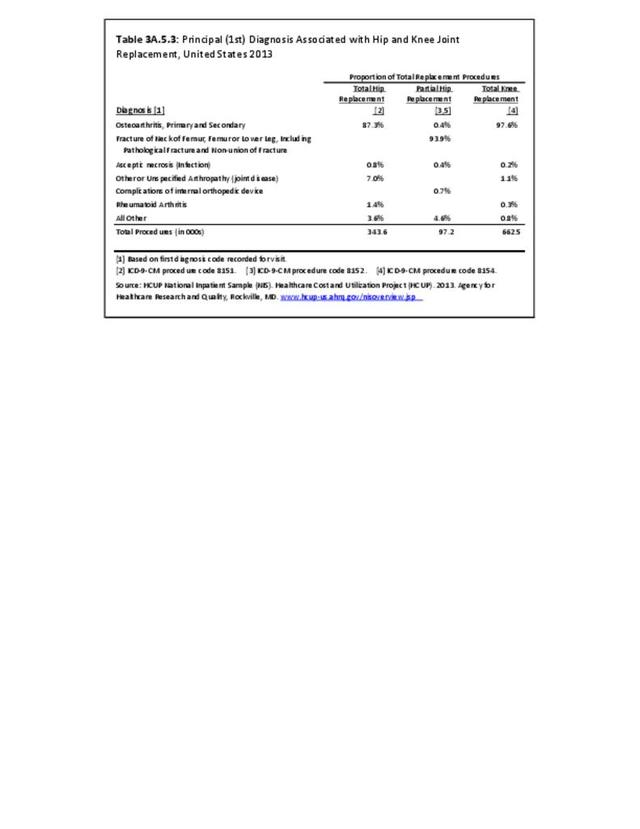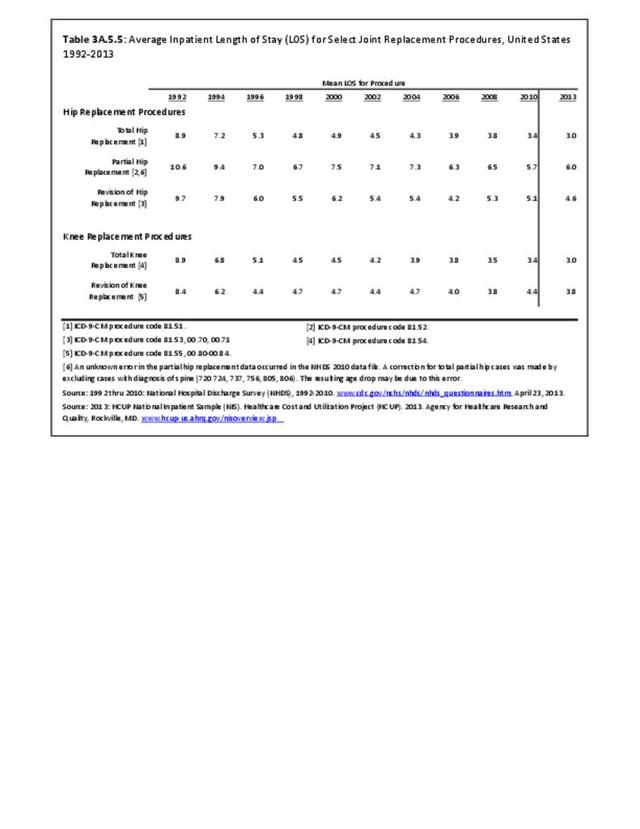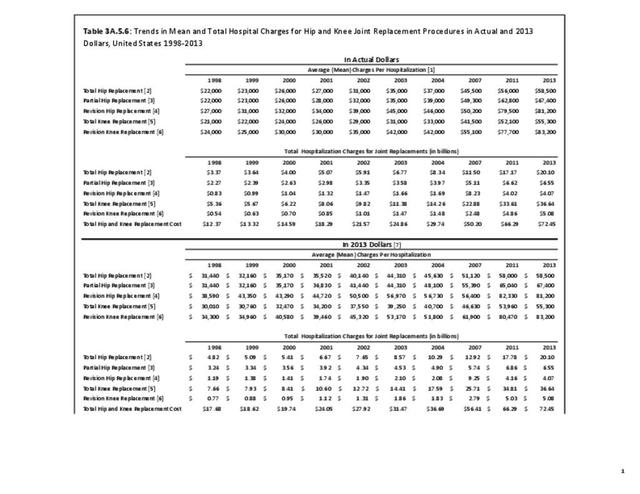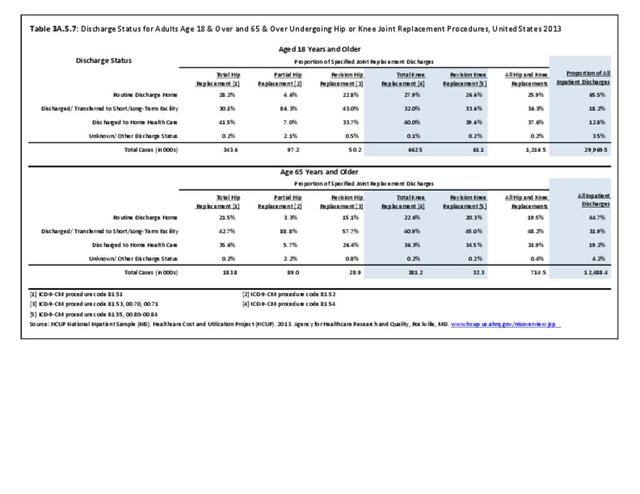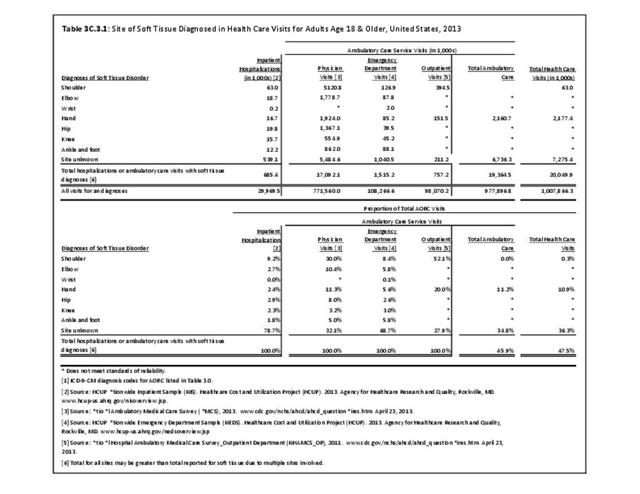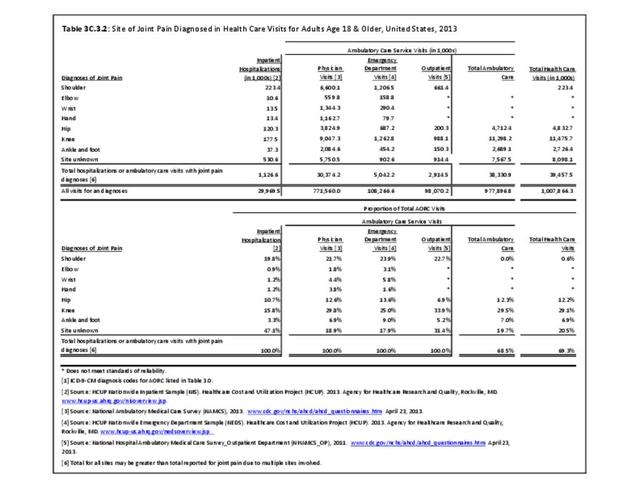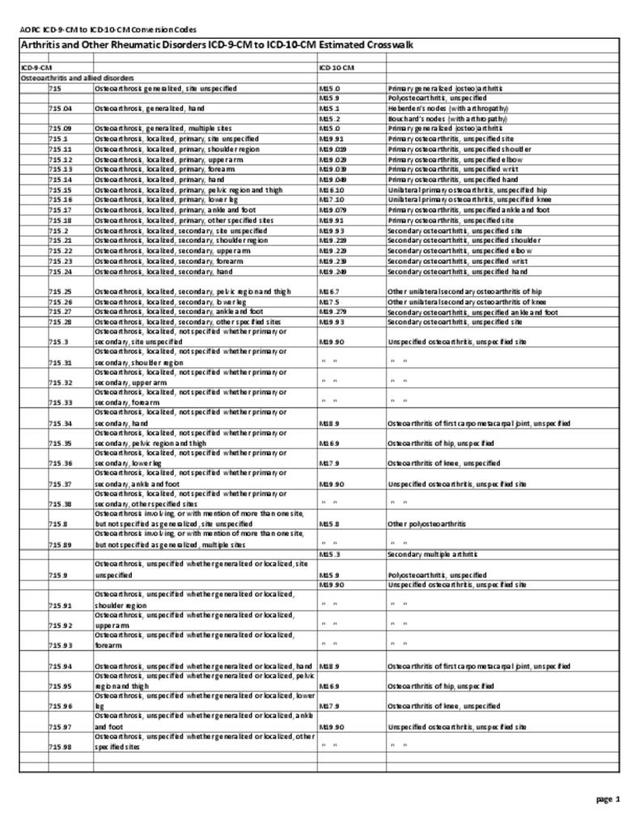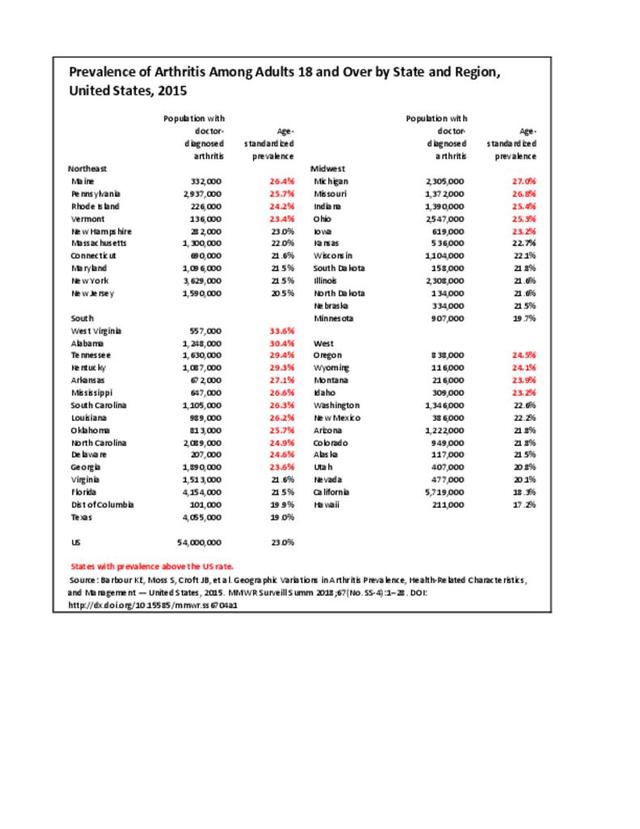Arthritis is a term that is used for a diverse group of painful conditions affecting the joints and surrounding structures. Arthritis is among the leading conditions causing work limitations.1 Using the National Health Interview Survey (NHIS) for 2013-2015, the estimated number of adults with doctor-diagnosed arthritis (DDA), on average, was 54.4 million,2 and is projected to reach 78.4 million, or 26% of the adult population, by 2040.3 The estimated number of adults, on average, with arthritis-attributable activity limitation (AAAL) was 23.7 million,2 projected to reach 34.6 million, or 11.4% of all adults, in 2040.3 Estimating the prevalence and burden of the various disorders that comprise arthritis and other rheumatic conditions (AORC) is important to understanding the current and growing impact of these disorders on the health care and public health systems. Equally important is identifying the gaps in our understanding of these measures and targeting potential interventions.
Arthritis is a general term that specifies inflammation in a joint although the term is sometimes used more broadly to include conditions where evidence of inflammation may be limited. Arthritis is usually associated with symptoms of joint pain and can result in activity limitation. Therefore, the following pages will reflect arthritis and other related conditions in two approaches.
First, we use the categorization developed over the years by the National Arthritis Data Workgroup and the Arthritis Program at the Centers for Disease Control and Prevention (CDC). This approach to AORC, presented in Segment 1, focuses on nine of the most common forms of arthritis plus an all other category (click HERE to view the AORC categorization) and is terminology familiar to the medical and research communities. For self-report survey data, a related definition of DDA is also used. This approach largely uses the self-reported DDA definition and the AORC definition, and frequently compares the estimates for the 10 AORC subtypes to overall AORC.
The second approach, presented in Segment 2, categorizes arthritis into terminology often used with patient populations to explain their joint pain or joint disease and provides a summary and additional depth on the most familiar arthritic conditions. Using the same base data tables, analysis in this approach focuses on arthritis disorders as a share of all healthcare disorders. Included at the end of this approach is a discussion of joint pain common to all arthritis disorders, and trends in joint replacement.
An overview of the main topics within each segment is shown below. To jump to the two segments, click on the title below.
Segment 1: Arthritis and Other Rheumatic Conditions (AORC)
1 Prevalence of Arthritic Conditions
2 Healthcare Utilization
3 Burden of AORC
4 Economic Burden of AORC
5 Impact of Aging
6 Key Challenges to Future
7 Unmet Needs
8 AORC ICD-9-CM Diagnosis Codes
Segment 2: Joint Disease: Arthritis in Patient Populations
1 Osteoarthritis
2 Inflammatory Arthritis
A Rheumatoid Arthritis
B Spondylarthropathies
C Mixed Connective Tissue Disorders
3 Gout
4 Joint Infection
5 Fibromyalgia
6 Juvenile Arthritis
7 Joint Pain and Joint Replacement
8 Disparities
9 Key Challenges to Future
10 Unmet Needs
11 Estimated ICD-9-CM & ICD-10-CM Crosswalk Codes
- 1. Theis KA, Roblin D, Helmick CG, Luo R. Prevalence and causes of work disability among working-age US adults, 2011-2013, NHIS. Article in press, Disability and Health Journal 2017:1-8.
- 2. a. b. Barbour KE, Helmick CG, Boring M, Brady TJ. Vital signs: Prevalence of doctor-diagnosed arthritis and arthritis-attributable activity limitation—United States, 2013-2015. MMWR 2017;66(9):246-253.
- 3. a. b. Hootman JM, Helmick CG. Updated projections of US prevalence of arthritis and associated activity limitations. Arthritis & Rheumatism 2016;68(7):1582-1587.
Edition:
- Fourth Edition

